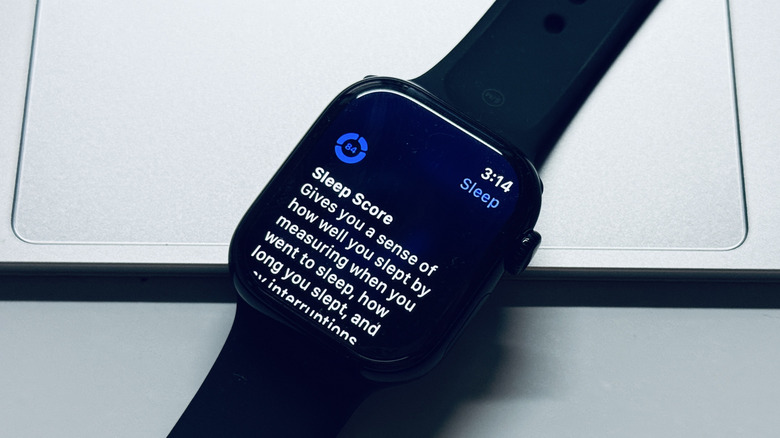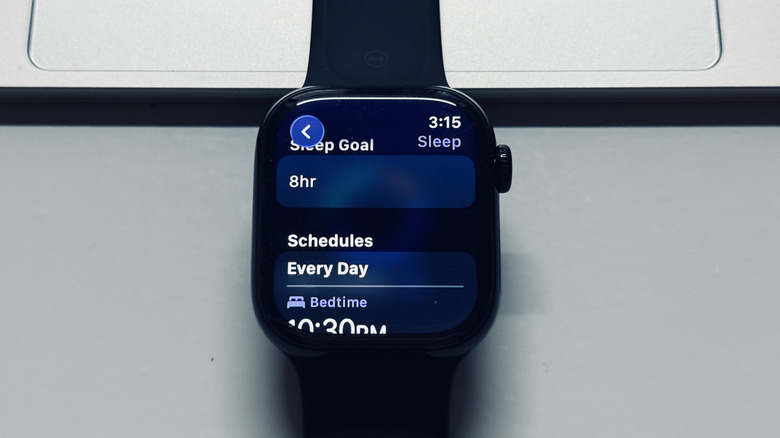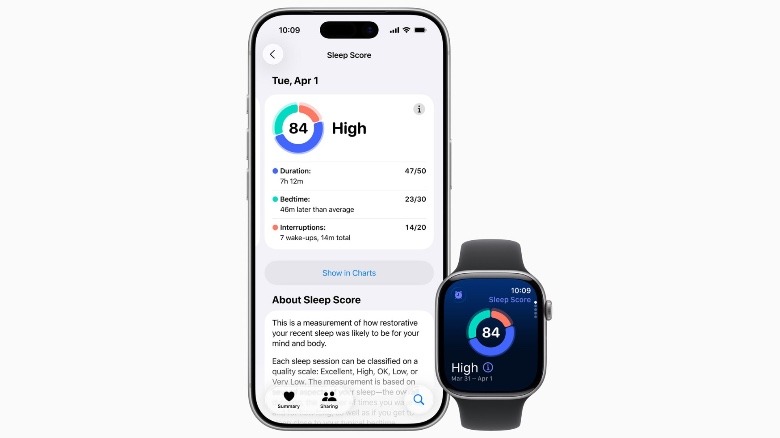Apple Watch Can Now Rate Your Rest With A Sleep Score - Here's How It Works
We all have days where we wake up after clocking the usual sleep hours, but still feel fatigued and wonder if there was something wrong during the rest hours. For such situations, the sleep tracking graphs don't usually offer any concrete help. You're left wishing for a science-backed scoring system that could grade your sleep quality. That's broadly what the new Sleep Score system on the Apple Watch has to offer.
The Apple Watch has offered a sleep tracking facility for years, providing users with a detailed breakdown of the three core sleep stages and the awake phase. These stages are a broad evaluation of the quality of your shut-eye time, but making sense of a graphical representation of these four stages can be pretty overwhelming for an average person who is not well-versed with terms such as REM sleep. That's where the new sleep score system comes into the picture.
It's a new feature that arrived with the watchOS 26 update and will be available on all models launched after, and including, the Apple Watch Series 6, Apple Watch SE 2, and Apple Watch Ultra. The sleep score condenses details such as the time spent in each sleep stage, net duration, consistency with the usual bedtime hours, and the instances of intermittent sleep waking. It represents it all as an easy-to-understand numerical score and qualitative rating, too. On the watch, you will come across something like "86 Sleep Score, High quality," each morning. All you have to do in order to get started is set a daily sleep target (in terms of hours) and a sleep schedule that you can follow each night.
How does the sleep scoring system work?
Apple collected data from 5 million night sleep sessions, and accordingly trained algorithms following the guidelines issued by agencies such as the American Academy of Sleep Medicine, National Sleep Foundation, and World Sleep Society. The sleep score is essentially a measure of just how restorative the last night's sleep was. Each morning, 15 minutes after you wake up, the Apple Watch assigns a sleep score and ranks the quality, too. Additionally, it will also offer a detailed breakdown of aspects such as how many times the sleep was interrupted (maximum 20 points), the net duration of sleep (maximum 50 points), and if your bedtime followed the usual schedule (maximum 30 points) or if it was delayed.
Aside from the net score you get on a scale of 0-100, the algorithmic tracking also assigns a qualitative award that could be Excellent, High, OK, Low, or Very Low. The Sleep Score details appear within the Sleep app on the Apple Watch, but you can also access them directly using the Smart Stack straight from the lock screen. Additionally, the details are logged in the companion health on your iPhone. You can also go back in time and compare it with the previous night's data, or the average from the past two weeks. On the technical side, sleep tracking is done by collecting movement data from the built-in accelerometer on the Apple Watch, and a similar strategy is also followed to implement the marquee sleep apnea detection system on Apple's smartwatch.


